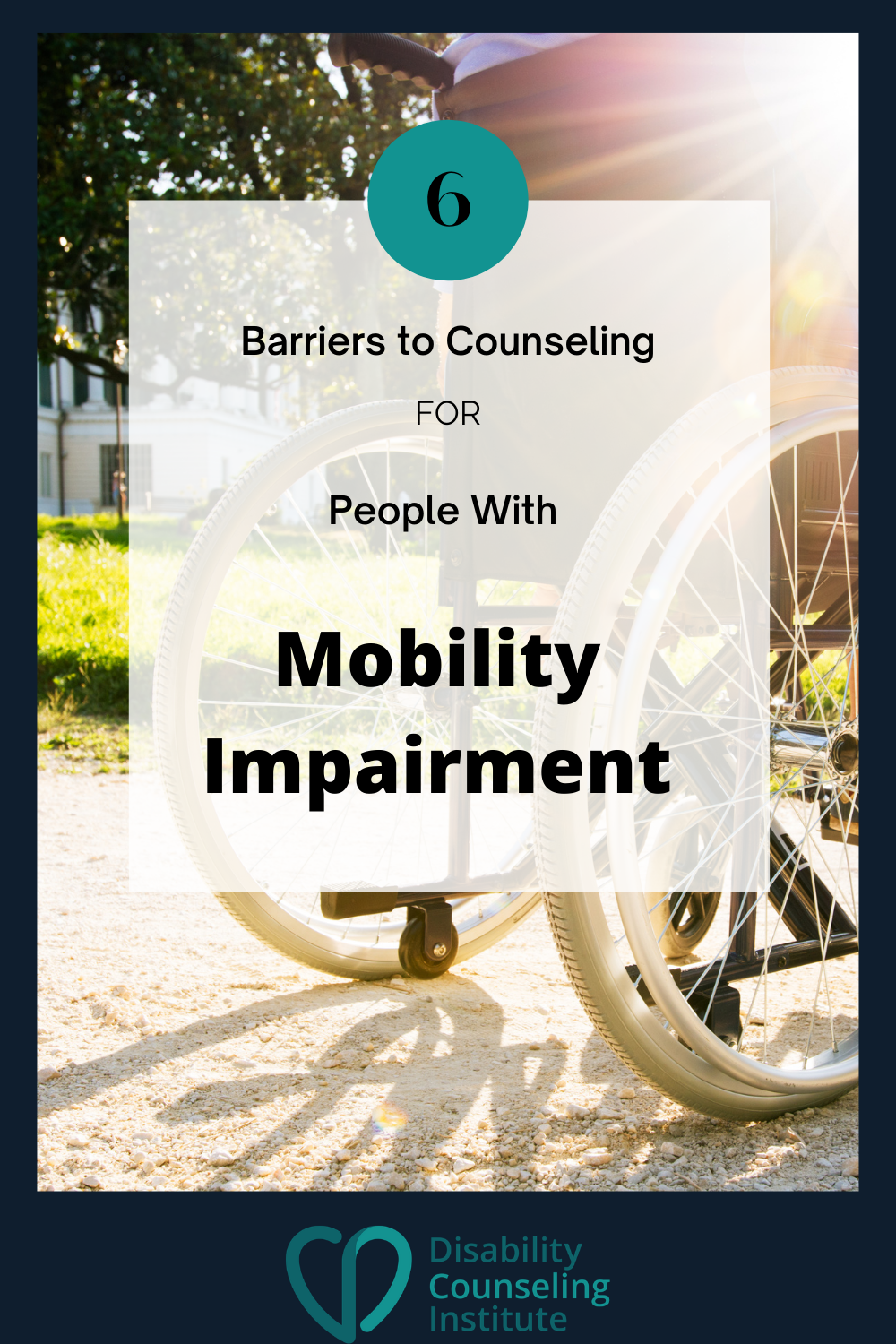6 Barriers to Counseling for People with Mobility Impairments
For people in wheelchairs or who have mobility impairments, there can be everyday challenges that people don’t often consider. Navigating an inaccessible world from day-to-day takes its toll, and people need allies to help them cope. So let’s see if we can remove the frustrating and limiting barriers from accessing mental health services.
Many of these challenges can be removed or improved with basic education and awareness. Some of the most common are:
Wheelchair access Photo by Charles Deluvio on Unsplash
Inaccessible buildings and offices
One of the most common barriers for people with mobility impairments and aids is the inaccessibility of physical structures. This includes parking spaces, bathrooms, entrances, offices, and other structural/architectural aspects of an environment. Many structures are not ADA compliant or have done the minimum to say that their facility is in compliance. Often times, even in buildings that are structurally accessible, an uninformed person will create barriers with furniture or other obstacles. Removing these barriers may seem overwhelming, but it does not have to be. There are ways in which these changes can be funded, or providing an alternate method of accessing services can be a good compromise.
2. Lack of awareness about types of disability
Education and awareness are significant aspects of disability inclusion and informed care. Barriers to treatment often arise when a provider discloses there lack of knowledge and expects the client/patient to educate them during the appointment time. A lack of awareness can also cause practitioners to say or do something offensive or harmful.
3. Disregard for culture or perspectives
People with disabilities are as diverse as any group. Not everyone views disability as an impairment. There are many individuals that have a disability affirming perspective which accepts their condition as part of their identity. It’s important to know about the cultural differences within the disability communities and ask individuals for their beliefs and perceptions rather than making assumptions.
4. Intrusive touch
The touch barriers seem to be viewed differently with people with disabilities. They often get touched, patted, maneuvered, or treated differently when it comes to personal space and autonomy. It is not okay to touch, lean on, or move a person’s wheelchair or other mobility aid. It’s not okay to pat them on the head or arm to convey sympathy or other emotions. However, this happens frequently when people lack awareness.
5. Transportation barriers
People with disabilities often have transportation challenges. Awareness of this and accommodations should be made where possible. There may be difficulty accessing transportation, there may be time constraints, or there may be a lack of flexibility that needs to be respected. It’s not uncommon for a provider to be running behind schedule or have a change which clients/patients are often expected to accommodate. This may not be possible for a person with a disability.
6. Unwillingness to make accommodations or provide services
Very often, when reaching out to a new practitioner for services, people with disabilities are told that they will need to look elsewhere once they disclose their disability or ask for an accommodation. Practitioners are typically not trying to be discriminatory, but refusing to accommodate a disability-related request or make reasonable adjustments to policies and procedures is a violation of the ADA. If a person states they use a wheelchair or other mobility aid and asks about accessibility, the practitioner has a responsibility to provide them with an alternate way of receiving services if the physical barriers cannot be removed.
Consider what small changes could be made to eliminate these six barriers. Awareness, education, and a desire to be inclusive are the first steps.
Reaching out for help to a mental health professional is hard enough for anyone to do, but services should be as accessible as possible. I’ve found that most practitioners are willing and happy to be inclusive once they know what to do, and why it’s important. To learn more about disability inclusion, download our free intro guide or check out our online courses.
By Sarah Clark, LMFT, LMHC, CVRT


